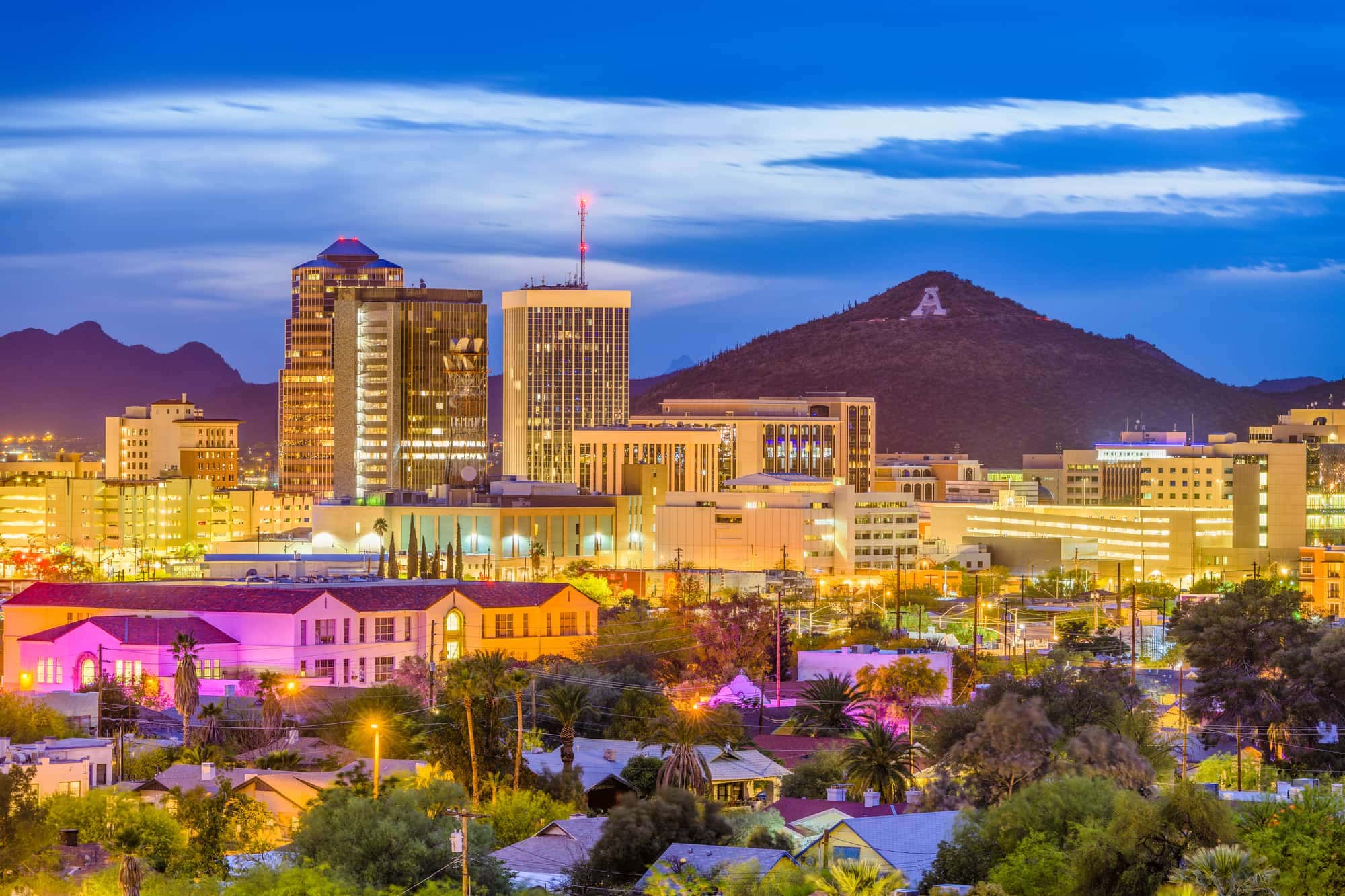Are you considering a move to the beautiful state of Arizona? Look no further! Whether you’re seeking a sunny climate, breathtaking natural landscapes, or a booming economy, Arizona has it all.
From the stunning Grand Canyon to vibrant cities like Phoenix and Tucson, Arizona offers a unique blend of outdoor adventure, cultural diversity, and endless opportunities.
This guide will provide you with everything you need to know before making the leap to the Grand Canyon state. From its favorable tax environment in the booming job market to its affordable housing options and outdoor recreational activities, Arizona is an ideal destination for individuals and families alike.
An Overview of Arizona
Nestled in the southwestern region of the United States, Arizona is a state of remarkable beauty and diverse landscapes. From the iconic Red Rocks of Sedona to the saguaro cactus-dotted Sonoran desert, Arizona’s geography is breathtaking.

The state is also home to the awe-inspiring wonder of the world, the Grand Canyon, which draws millions of visitors each year. With its stunning sunsets, vibrant sunrises, and vast expanses of untouched wilderness, the state offers those opportunities for outdoor enthusiasts and nature lovers.
In addition to its geography, Arizona boasts a warm and sunny climate that attracts residents and tourists alike. The state enjoys more than 300 days of sunshine annually, making it an ideal destination for those seeking a year-round outdoor lifestyle.
Summers can be hot, especially in desert areas, but the low humidity provides some relief. The mild and pleasant winters make Arizona an attractive choice for those looking to escape the frigid temperatures in other parts of the country.
Arizona’s population is as diverse as its beautiful landscapes. The state is a melting pot of cultures, with Native heritage, along with a blend of Hispanic, Anglo, and other ethnic communities. Its vibrant mix contributes to a thriving arts and culinary scene, offering a variety of cultural experiences to explore.
Moreover, Arizona’s history is filled with details of pioneers, cowboys, and Native American tribes, creating a unique tapestry that adds depth to the state.
Cost of Living
When considering moving to Arizona, it’s important to consider the state’s cost of living. Overall, Arizona has a relatively affordable cost of living compared to other popular destinations in the United States. However, specific expenses may vary depending on the city or region you choose to reside in.
Housing Prices
Arizona real estate costs are generally affordable by the country standards, with various options available. The median sale price in the state is currently $411K. Renting an apartment in cities like Phoenix, Tucson, or Flagstaff can range from moderately priced to more expensive, depending on the location and the amenities.
If you’re considering purchasing a home, Arizona offers a range of prices to suit different budgets. However, it’s worth noting that property taxes can be higher in some areas, so it’s essential to research and understand the local tax rates.
Utilities
Utilities in Arizona are fairly reasonable. The warm climate means that heating costs are generally low compared to colder regions, although air conditioning costs may increase during the hot summer. The state has a competitive energy market, allowing residents to choose between various providers to find the best rates for electricity and gas.
Healthcare
When it comes to healthcare, Arizona offers a mix of options. The state has a robust healthcare system with numerous hospitals, clinics, and medical professionals. The cost of medical services can vary depending on insurance coverage, the specific provider, and the type of treatment required.
It’s advisable to explore health insurance options and consider factors such as premiums, deductibles, and coverage before making any decisions.
Groceries
Food prices in Arizona are fairly affordable as well. Grocery stores and supermarkets offer a range of options at competitive prices. Dining out can also be reasonably priced, with various restaurants catering to different budgets and tastes. It’s worth noting that cities like Phoenix and Tucson have diverse culinary scenes, offering an array of dining choices.
Other expenses you might encounter include transportation, insurance, and entertainment. Arizona has a relatively low average cost for gas, making commuting and travel more affordable.
Arizona Real Estate Market
The housing costs in Arizona are generally lower compared to the national average, making it an attractive option for those looking for affordable real estate. The median home price in Arizona is $411K, below the national average, allowing buyers to find more value for their money. You’re also going to find a diverse range of home styles. These include:
- Spanish style-villas
- Southwest-inspired architecture
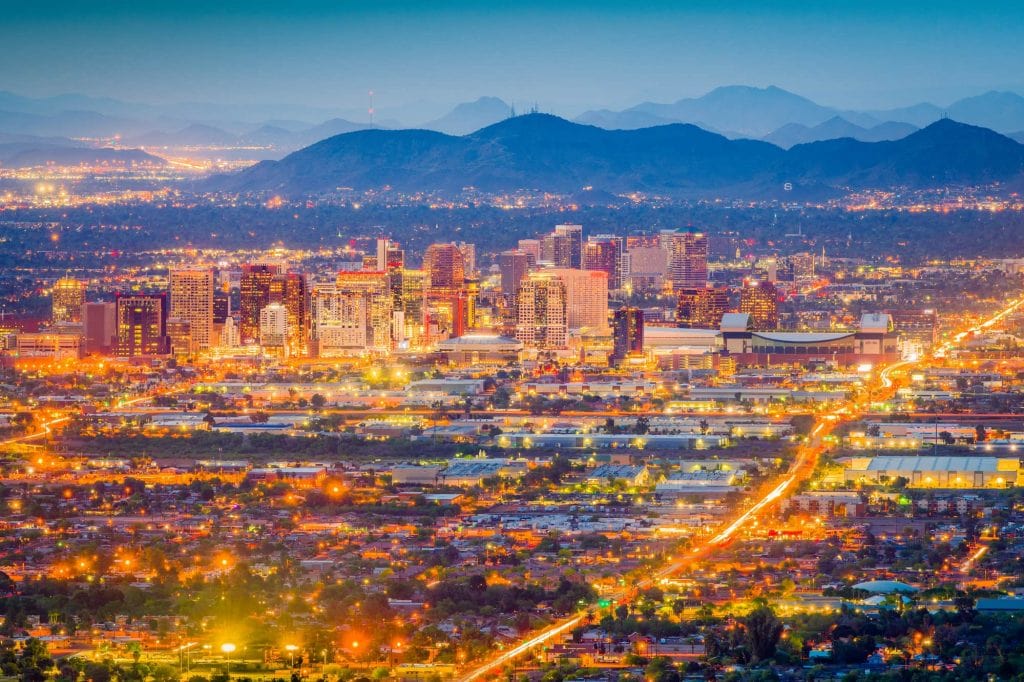
The state’s housing market is characterized by a mix of urban and suburban areas. Major cities like Phoenix and Tucson have a range of housing options, from single-family homes to apartments and condominiums. Suburban neighborhoods offer a more relaxed and family-friendly atmosphere, often with larger properties and access to amenities such as parks and schools.
Arizona’s housing market is also known for its availability of new construction homes. The state experiences steady growth, leading to new housing developments and communities built to accommodate the increasing demand. This allows buyers to explore newly constructed homes with modern features and amenities.
The real estate market in Arizona has experienced consistent growth in recent years. The state’s affordable housing prices, coupled with strong demand from both residents and out-of-state buyers, have contributed to a healthy market. Urban areas like Phoenix and Tucson have seen significant development, with new construction projects and revitalization initiatives.
Economy
Here are a few basics that you should consider when it comes to Arizona’s economy.
Income
The median income in Arizona is around $61,529 for a household and $31,383 for an individual, as of data from 2020. The state has a diverse range of industries, from healthcare to tourism, manufacturing center technology, and aerospace, that contribute.
The median household income in Arizona is slightly below the national average, though. Still, living costs are also generally lower, providing residents with a favorable income-to-expense ratio.
Taxes
In Arizona, residents have a 5.6% state sales tax rate and a favorable tax environment. The state also has a progressive income tax system with multiple tax brackets, where higher-income earners are subject to higher tax rates.
Arizona does not tax Social Security benefits, and several deductions and credits are available to taxpayers, including a standard deduction and an earned income tax credit for low-income individuals and families.
Best Cities

Here are a few of the best cities in Arizona to consider living in:
Phoenix
- As the capital and largest city in Arizona, moving to Phoenix offers a vibrant urban lifestyle with a wide range of amenities.
- Boasts a thriving job market, with abundant opportunities in various industries, including healthcare, technology, finance, and aerospace.
- The city is known for its warm weather, outdoor recreational opportunities, and proximity to stunning desert landscapes.
Tucson
- This is a culturally rich city known for its architecture, arts scene, and well-established suburbs.
- It is home to the University of Arizona, which contributes to the job market and the demographics in the area.
- The city is surrounded by deserts and mountains.
- It has an affordable housing market and a relatively low cost of living.
Scottsdale
- Scottsdale is a renowned destination known for its luxurious resorts, upscale shopping, and world-class golf courses.
- The city offers a high quality of life with beautiful neighborhoods, well-maintained parks, and excellent schools.
- The city provides a desirable combination of a relaxed desert lifestyle and upscale amenities.
Sedona
- Sedona is famous for its breathtaking red rock formations, making it a haven for outdoor enthusiasts and nature lovers.
- It offers a serene and picturesque setting with numerous hiking trails, scenic drives, and spiritual retreats.
- The city also has a great art scene that attracts artists nationwide.
- It’s also a popular tourist destination.
Flagstaff
- Situated at a higher elevation in the northern part of the state, Flagstaff offers a cooler climate and stunning natural beauty.
- Home to the picturesque San Francisco Peaks, which provide a variety of outdoor recreational activities such as skiing, hiking, and camping.
- Flagstaff is a hub for science and research, with the presence of Lowell Observatory and Northern Arizona University.
Climate
Arizona experiences a range of climates, including desert and mountainous regions. The southern and central parts of the state, such as Phoenix and Tucson, have a desert, dry climate characterized by scorching summers with very high temperatures exceeding as much as 100°F (38°C) and mild winters with temperatures ranging from 60°F to 70°F (15°C to 21°C).
On the other hand, northern Arizona, including cities like Flagstaff and Sedona, has a mountainous climate due to higher elevations and a more reasonable heat index in the summer.
Summers in the mountains are cooler, with average temperatures in the 70s°F (20s°C) during the day, while winters can be cold, with temperatures dropping below freezing and the possibility of snowfall.
The monsoon season is another significant factor considering Arizona. Lasting from June to September, the monsoon season brings increased humidity with the potential for intense thunderstorms, heavy rainfall, and flash floods. While the monsoon season can provide relief from the desert heat and contribute to the lushness of some areas, it’s important to be prepared for certain weather changes.
Choosing the right location in Arizona is essential to align the climate with your preferences and lifestyle. Some individuals may thrive in the dry heat of the desert, while others may prefer the cooler temperatures and scenic beauty of the mountains.
Geography
Arizona is known for its contrasting desert and mountainous regions. Landscapes with iconic Saguaro cacti and breathtaking sunsets, these areas offer vibrant urban lifestyle proximity to amenities and a warm climate.
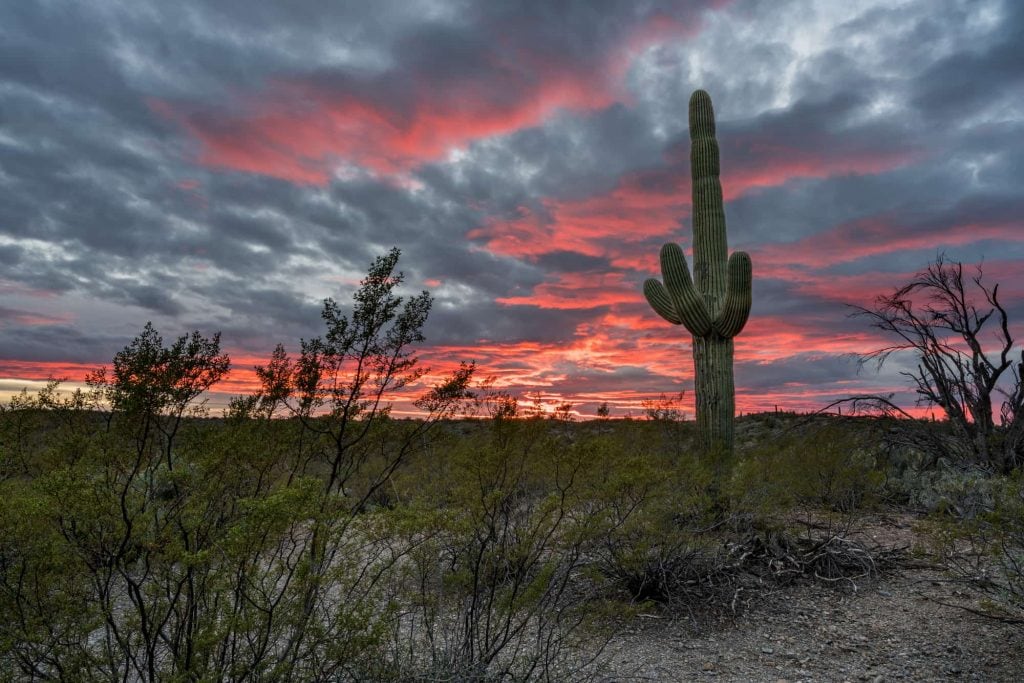
On the other hand, northern Arizona, including Flagstaff and Sedona has the most stunning mountain ranges, dense forests, and cooler temperatures. Summers are generally cooler, with average temperatures of 70° Fahrenheit (20° C) during the day and cool nights. Winters in the mountains can be cold, with temperatures dropping below freezing.
Arizona is home to several natural attractions that may inform where you want to live. The Grand Canyon, for example, is one of the country’s best-known natural landscapes and is located in the northern part of the state. Other interesting places of note include Saguaro National Park and Monument Valley.
Popular Attractions
The Grand Canyon
The Grand Canyon is an inspiring natural wonder and one of Arizona’s and the United States’ most iconic attractions. It was carved by the Colorado River over a million years ago, and this vast Canyon showcases breathtaking Beauty and stunning geological formations.
Visitors can explore the canyon from various viewpoints along the South Rim, taking in panoramic vistas of the rugged cliffs and deep gorges.
Hiking trails like the Bright Angel Trail offer opportunities to descend into the canyon and witness its magnificence up close. For a unique experience, the Grand Canyon can be viewed via helicopter or airplane. The Grand Canyon is not only a visual spectacle but also a testament to the forces of nature that have shaped this area of Arizona over the centuries.
Sedona’s Red Rock Country
Sedona’s Red Rock Country is renowned for Its stunning Red Rock formations, creating a captivating landscape that has attracted visitors from around the world. It may also be one of the draws that inspire you to move to the area.
The vibrant orange and red hues of the rock combined with the contrast and greener of their shouting forests make for a mesmerizing sight. Outdoor enthusiasts can explore the numerous hiking trails that wind through red rocks (ideal for mountain biking), such as the famous Cathedral Rock or Bell Rock trails. You could also explore the area via a Jeep tour.
Antelope Canyon
Antelope Canyon, near Page, Arizona, is an incredible slot canyon that was formed by years of erosion and features stunning balls and narrow openings. Visitors can explore both the upper and lower sections of the canyon with a guided tour.
Saguaro National Park
Saguaro National Park may be another reason that you’re interested in moving to Arizona. The park’s desert landscape is adorned with towering cacti, creating a remarkable sight that attracts visitors from around the country.
Culture
Native American Culture
Arizona is home to numerous Native American tribes, including the Navajo, Hopi, Apache, and many others. These communities have a profound influence on the state’s cultural fabric, preserving ancient traditions, arts, and crafts.
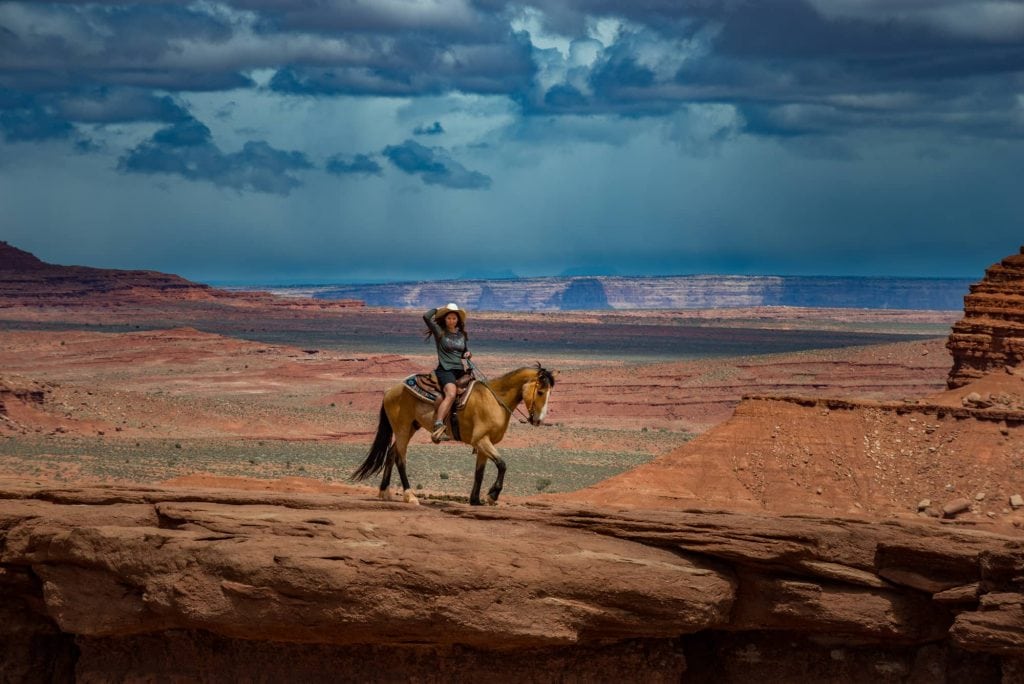
Visitors can explore tribal lands, visit museums and cultural centers, and experience traditional ceremonies and dances. Culture is an integral part of the state’s identity.
Sports
Sports play an important role in Arizona’s culture. Phoenix is home to:
- The Arizona Diamondbacks, an MLB team
- The Phoenix Suns, an NBA team
- The Arizona Cardinals, an NFL team.
It’s also a popular destination for golf enthusiasts, boasting numerous world-class golf courses that attract players from around the world.
Arts
As previously noted, the state is known for its thriving arts scene. Has many different artists living in the area working in various styles, including a fusion of traditional Native American art and contemporary works in a strong presence of western and southwestern art styles.
The state is filled with art galleries, museums, and art festivals that showcase this diverse range of artistic expression.
Jobs in Arizona
The job market in Arizona is rather diverse. The state offers ample career opportunities across various industries, making it an attractive destination for job seekers.
Some of the many sectors within Arizona include healthcare, education, technology, aerospace, tourism, and manufacturing. All of these drive job growth. Some of the major employers in the state include:
- Banner Health
- Amazon
- American Express
- Intell
- GoDaddy
- Salt River Project
- Arizona State University
- Wells Fargo Bank
- Arizona Public Service
If you’re interested in working in the technology industry, cities like Phoenix and Tempe may be right for you. They are thriving tech hubs with many active startups and established companies alike.
Retirement and Family
Arizona offers a favorable environment for both retirement and family life. It has a warmer climate, something that is attractive to retirees who are looking for some respite from cooler weather.
The lifestyle in the state is also very active, meaning that many young families are going to find a range of activities to enjoy. The same holds true for retirees as well. There is everything from world-class golfing to trails and rock climbing.
Arizona is also home to numerous retirement communities that support an inclusive environment for retirees. These communities offer everything from fitness centers to swimming pools, social clubs, and organized activities.
Arizona also has a strong education system, with public and private schools providing a great education for children. Plus, the state’s lower cost of living makes it easier for younger families just starting out in life.
Local Cuisine
It’s no secret that food in Arizona is a pretty big deal. The state is very diverse, and the food reflects this.
The area is renowned for its southwestern cuisine, with bold and spicy flavors and a variety of local chilies, like jalapenos and hatch chilies, adding flavor to some of the best dishes. Traditional cuisine uses spices like cumin, coriander, and more to create complex flavors characteristic of the region.
There is also a lot of Native American influence on the region, with the area home to Navajo, Hopi, Apache, and other groups who have contributed a great deal to the region’s food culture.
The State also promotes a great agricultural landscape contributing to a thriving “Farm to Table” movement. The state’s air climate and fertile soil are conducive to growing a wide variety of produce, including Citrus fruits, peppers, melons, and dates.
The area is also influenced by International flavors and cuisines, such as the culinary traditions of Mexico.
Wildlife
Arizona residents will be the first to tell you that there are more than a few places to see incredible wildlife in the state, and one of them is likely outside your front door! In urban areas, residents may come across javelinas, desert cottontail rabbits, roadrunners, and various species of lizards.
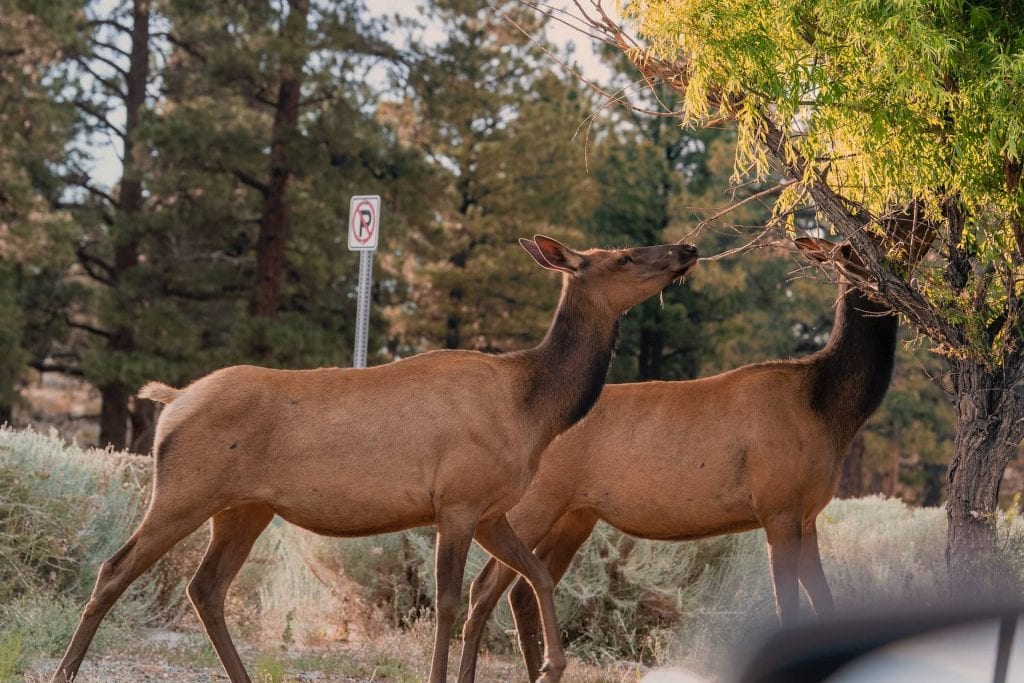
In more rural areas, it’s not uncommon to see coyotes, bobcats, and deer. It’s important to remember that all of these animals are wild, though, and should be observed from a safe distance.
Arizona is also home to several species of snakes, including the western diamondback, mojave, and sidewinder rattlesnake. While these snakes are venomous, they do play a vital role in the ecosystem. If you encounter a rattlesnake, make sure to give it space and back away slowly to a safe distance.
As in any wild place, make sure to avoid feeding or approaching wildlife, and always make sure your trash cans are secure at night. It’s important to educate yourself about Arizona’s wildlife if you’re planning on living there so you can respond correctly to any encounter.
Taxes
Arizona has a flat 2.50% individual income tax, a 4.90% corporate tax rate, a 5.60% state sales tax rate, and a max local sales tax rate of 5.30%. The state is regarded as being progressive when it comes to tax brackets, allowing for a great deal of variation in tax rates for different income levels.
Property taxes are relatively low compared to some other states, as well, with the sales tax rate of 5.6% also falling below the national average.
FAQs: Moving to Arizona
Here are some frequently asked questions about moving to Arizona in case you’re planning living there:
Is Arizona a good place to move to?
Yes, Arizona is considered to be a good place to move to due to the warm climate, reasonable cost of living, gorgeous landscapes, and plentiful outdoor activities.
What salary is needed to live comfortably in Arizona?
To live comfortably, most people moving to Arizona will need an income of around $60,000 to $70,000 per year. This varies depending on the exact location where you’re planning to move to, and your lifestyle specifics.
Why are people moving to Arizona in 2023?
Some of the reasons people are moving to Arizona in 2023 include the state’s favorable climate, abundant employment opportunities, lower cost of living compared to other states, and outdoor recreational activities.
Is it cheaper to live in Arizona or Nevada?
Overall, the cost of living in Arizona is slightly cheaper than that of Nevada.
Is AZ expensive to live in?
Arizona is not regarded as an overly expensive state to live in. It has a lower cost of living compared to other states like California, New York, or even Washington state.
What is the minimum wage in AZ?
The minimum wage in Arizona is $12.15 an hour, but this is subject to change and may be different when you move.
What city in Arizona are Californians moving to?
Many people are moving to cities like Scottsdale, Phoenix, Tucson, and Tempe, Arizona, from other states like California.
Is Florida or Arizona more affordable?
Florida is more affordable than Arizona, but not by much. According to bestplaces.net, the cost of living index of Arizona is 106.4, while for people moving to Florida the cost of living index is 103.1.
Is it cheaper to live in Colorado or Arizona?
Colorado is significantly more expensive to live in than Arizona. The former is about 11% more expensive of a place to live.
Which is hotter, Phoenix or Las Vegas?
The two cities are quite similar when it comes to heat in the summer, but Las Vegas is slightly cooler than Phoenix.
How hot is Arizona in the summer?
Arizona can reach startlingly high temperatures in the summer. The max heat you might see throughout the state on a given summer day is between 90°F and 120°F.
Parting Thoughts
In conclusion, moving to Arizona offers a variety of benefits and opportunities. It has a diverse geography, a favorable climate, and a relatively affordable cost of living. There is a lot to enjoy in the Grand Canyon state, no matter why you’re moving there.
The only thing missing from your Arizona dream is a home. Start by performing a custom home search with eXp and sign up for daily, weekly or monthly alerts for new listings in your areas of interest.
Once you find a potential property, contact a local eXp agent to assist you in the homebuying process. They have the experience and the resources to make it happen.
